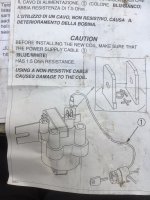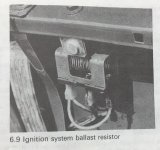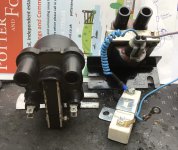Yes, I understand about the wasted spark system etc. in fact I was working on Citroen 2CVs, who used it first in 1948, many years prior to Fiat adopting it. But in relation to the "cross firing affect" a piece I didn't down load mentioned it could seriously downgrade the spark to the other cylinder.
So this was where it can cause a problem in some cases.
Around 1978 we had a customer with a Volvo 265 V6 that ran poorly and I traced it to the HT leads which were all bunched together, I found if I put my hands on them the sparks were jumping to me through the HT lead insulation breaking down although no visible fault, I fitted a genuine set from Volvo £26 (a fair bit of money to me at the time , although not to the night club owner driving the car

) which cured the problem.
Re the NGK resister spark plugs, non resister plugs need less voltage to fire them, hence a heavily "resisted" system is more likely to breakdown in damp conditions or high loads etc.
In the past we found cars with a basic copper wire lead set up and non resister plugs ran more reliable in adverse conditions than cars with resister plugs, carbon leads and resistors in the rotor arm etc. To the point when hooked up to a Crypton diagnostic machine it showed K volts could be double when using resistors, thereby electricity like water taking the easy route.






